You’ve probably watched your plants struggle with inconsistent watering, wondering if there’s a better way to monitor their hydration needs. While commercial moisture sensors can be expensive and limited in functionality, creating your own plant monitoring system offers both cost savings and customization options. These five homemade sensor solutions will transform how you approach plant care, each offering unique advantages that address different aspects of plant health monitoring.
Resistive Nail-Based Moisture Detector Using Arduino Nano

Building a resistive nail-based moisture detector transforms everyday galvanized nails into effective soil sensors that measure hydration levels through electrical resistance.
Transform ordinary galvanized nails into sophisticated soil sensors that detect moisture levels using simple electrical resistance principles.
You’ll insert two galvanized nails into your SOIL as electrodes, connecting them to an Arduino Nano with a 10k ohm resistor for accurate readings. When energized with 5 volts, this SENSOR measures resistance between the probes to determine MOISTURE levels.
The design’s simplicity makes it incredibly cost-effective, requiring only basic materials like jumper wires and a bottle cap.
You can easily integrate additional components such as a water pump to automate the watering system based on detected MOISTURE levels. This setup guarantees you’ll water your plant efficiently while promoting ideal hydration for healthy plant growth.
Capacitive Soil Sensor With ESP32 and Home Assistant Integration
While resistive sensors work effectively, capacitive soil moisture sensors offer superior longevity by eliminating the corrosion problems that plague nail-based designs.
You’ll find these sensors ideal for long-term monitoring since they don’t degrade over time.
The ESP32 microcontroller efficiently reads analog outputs from your capacitive sensors and transmits real-time soil moisture levels directly to Home Assistant.
You’ll need to perform calibration by recording voltage readings in both dry and wet soil conditions, then adjust these values in Home Assistant for accurate measurements.
Once configured, you can set up automatic watering triggers based on specific moisture thresholds through Home Assistant’s intuitive interface.
The ESP32’s multiple analog inputs let you monitor several plants simultaneously, creating a thorough hydration system that optimizes watering schedules for different plant species.
DIY Thermistor and Photoresistor Plant Monitoring System
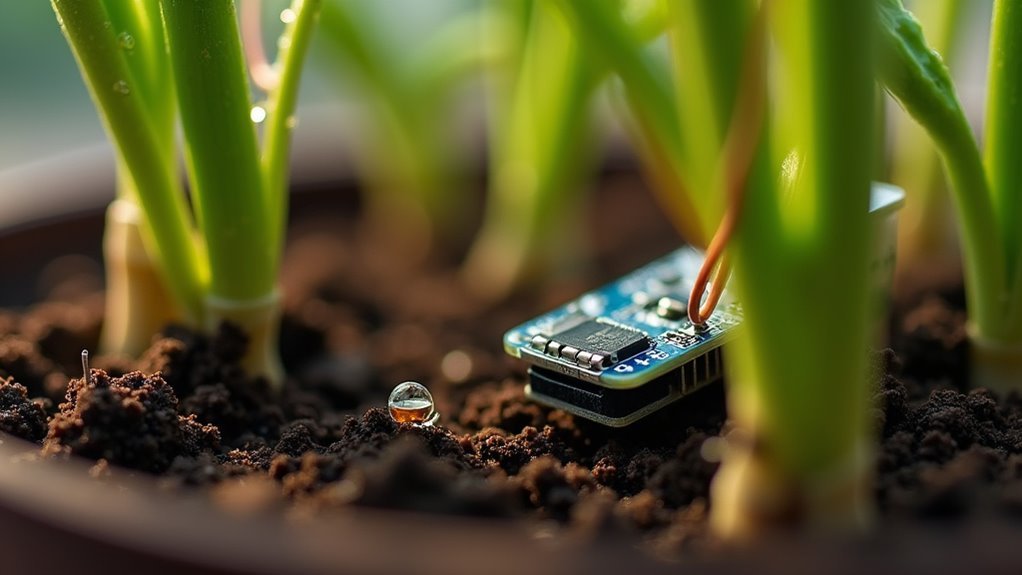
Expanding your plant monitoring capabilities beyond soil moisture opens up extensive environmental tracking through thermistors and photoresistors.
You’ll measure soil temperature using a DIY thermistor, ensuring your plants thrive within their ideal temperature ranges. Photoresistors track ambient light levels, confirming adequate sunlight for photosynthesis.
Connect both sensors to an Arduino microcontroller for seamless integration with automated watering system responses. When combined with traditional soil moisture sensors, you’ll create thorough environmental monitoring that tracks water needs alongside temperature and light conditions.
Calibrate your thermistor and photoresistor readings against known values to improve accuracy. This real-time data helps identify issues affecting plant health before they become critical.
Your enhanced monitoring system will automatically adjust watering schedules based on multiple environmental factors, not just moisture level alone.
Automatic Watering Circuit With Mosfet-Controlled Pump
When your soil moisture sensor detects dry conditions, you’ll need a robust switching mechanism to activate your watering pump automatically. A MOSFET-controlled pump provides efficient power management for your irrigation system. Connect your soil moisture sensor’s analog output to Arduino’s input pins, then wire digital pins to control the MOSFET gate.
| Component | Connection |
|---|---|
| Soil Moisture Sensor | Analog Pin A0 |
| MOSFET Gate | Digital Pin 7 |
| Pump Power | USB power source |
You’ll need to calibrate your sensor value thresholds for peak performance. Test readings in both wet and dry soil conditions, then program appropriate trigger points. A reliable USB power source guarantees consistent operation. This automated setup prevents over-watering while maintaining proper plant hydration levels.
Galvanized Probe Sensor With Visual LED Indicators
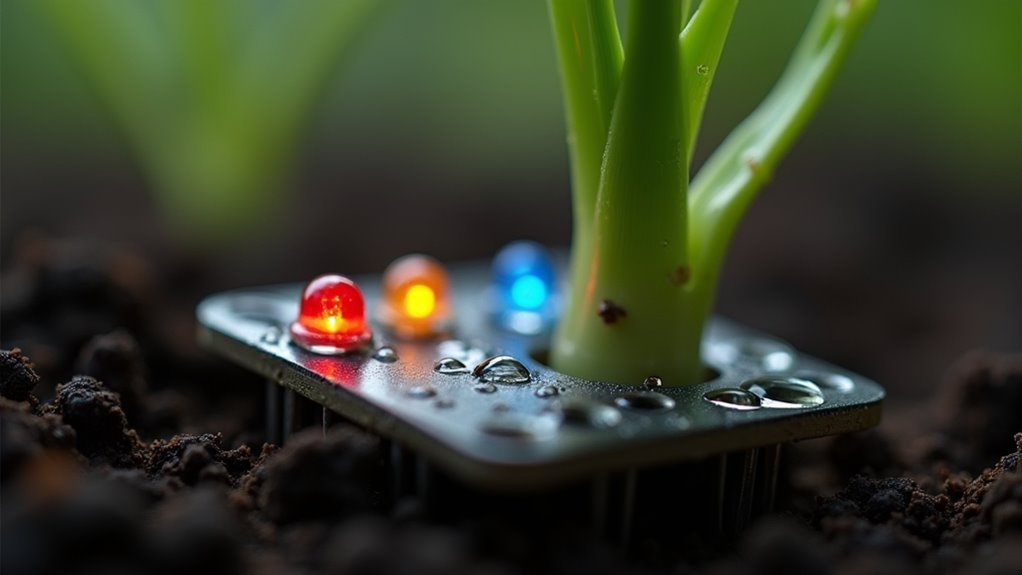
A galvanized probe sensor offers a simple yet effective approach to soil moisture monitoring using two galvanized nails as conductive probes. You’ll insert these probes into your soil to measure resistance levels between them.
When soil’s dry, resistance increases considerably, triggering your visual LED indicator to display different colors – typically shifting from green for adequate moisture to red for dry conditions.
Dry soil triggers higher resistance, activating color-coded LED alerts that shift from green to red as moisture levels drop.
You’ll need a 10k ohm resistor connected to your Arduino for stable readings and accurate calculations. You can calibrate the LED thresholds based on what your specific plants need.
This cost-effective setup uses basic components, making it perfect for DIY enthusiasts. The color-coded display provides instant feedback about your soil moisture levels, ensuring you’ll know exactly when it’s time to water.
Frequently Asked Questions
How Do You Make Homemade Plant Watering Devices?
You’ll create a moisture sensor using galvanized nails, connect it to an Arduino microcontroller, and program it to trigger a DC pump when soil’s dry. Add LED indicators and waterproof components for reliable operation.
What Is the Best Plant Humidity Sensor?
You’ll find capacitive soil moisture sensors work best since they’re more durable and corrosion-resistant than resistive types. They’ll give you precise analog voltage readings that you can calibrate for different plants and soil conditions.
How to Make a Moisture Meter at Home?
You’ll need two galvanized nails as probes, connect them to an Arduino with a 10k ohm resistor, secure in plastic with hot glue, then calibrate by testing in dry and wet soil conditions.
What Is the Most Accurate Moisture Meter for Plants?
You’ll find capacitive soil moisture sensors are the most accurate for plants, offering ±2% to ±5% precision. They don’t corrode like resistive sensors and often include temperature monitoring for thorough plant care.

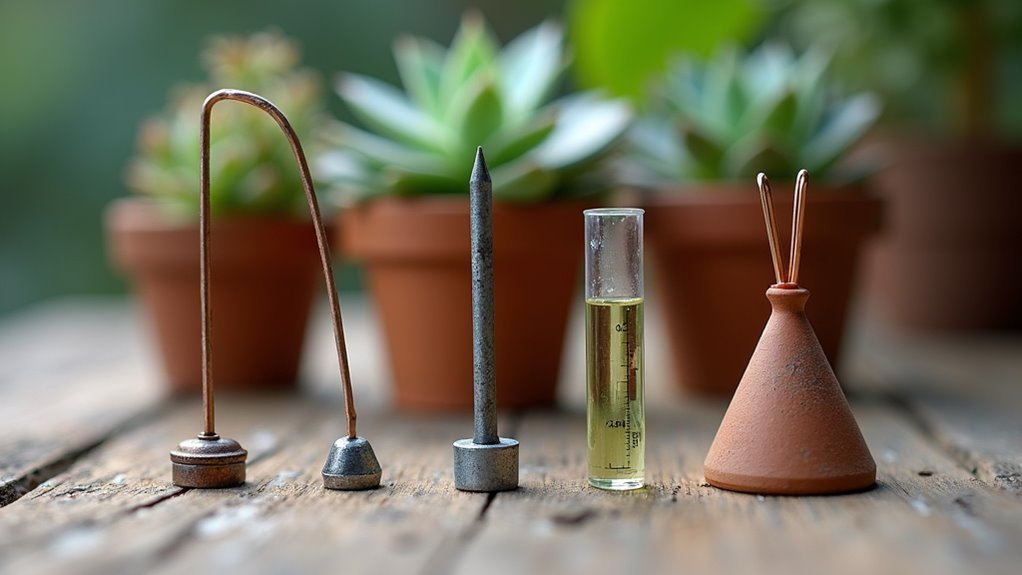
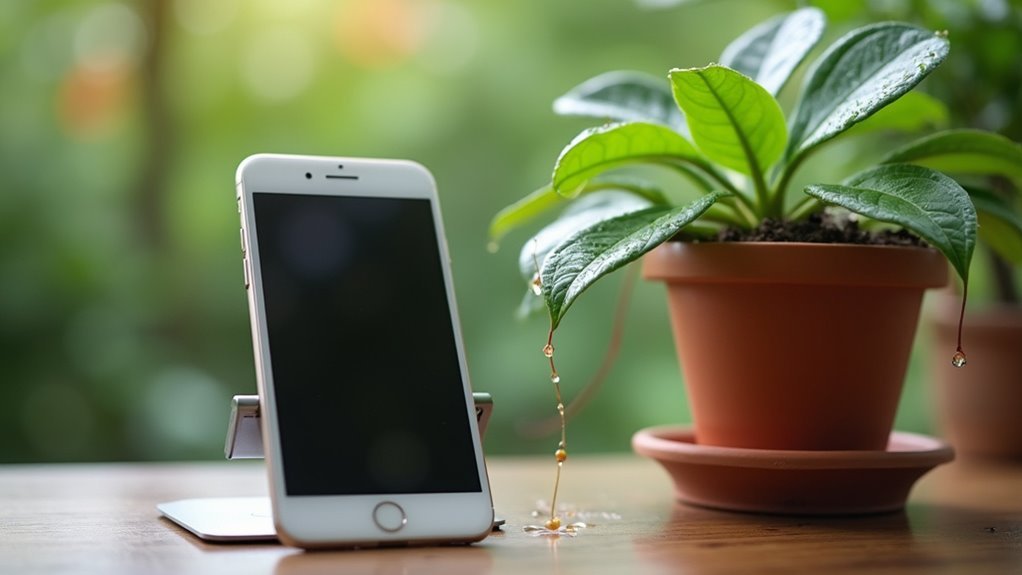
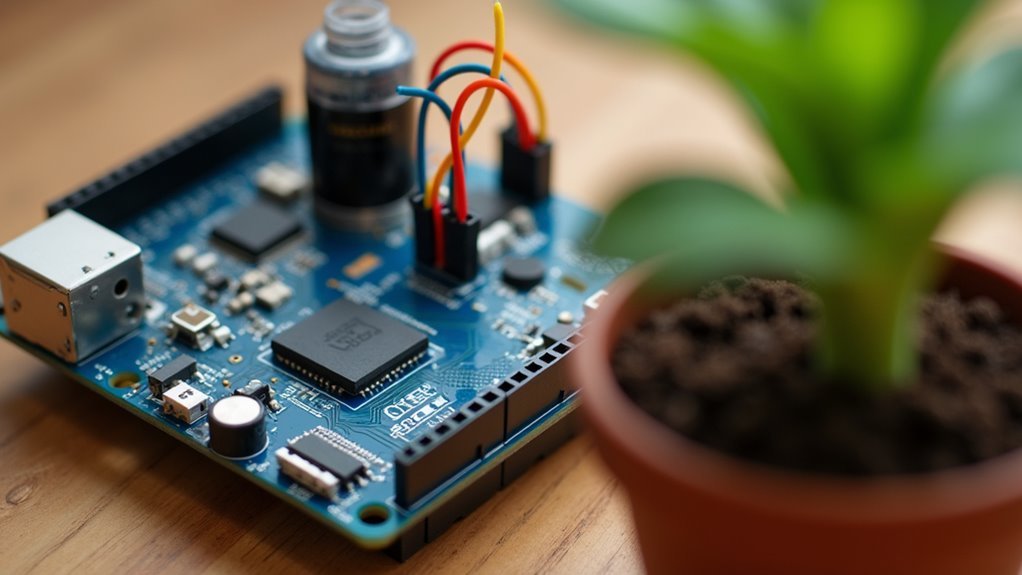
Leave a Reply